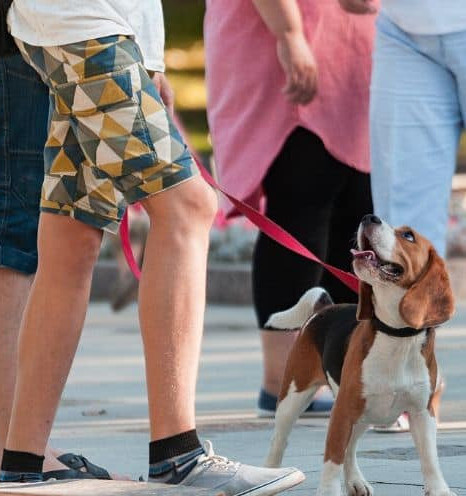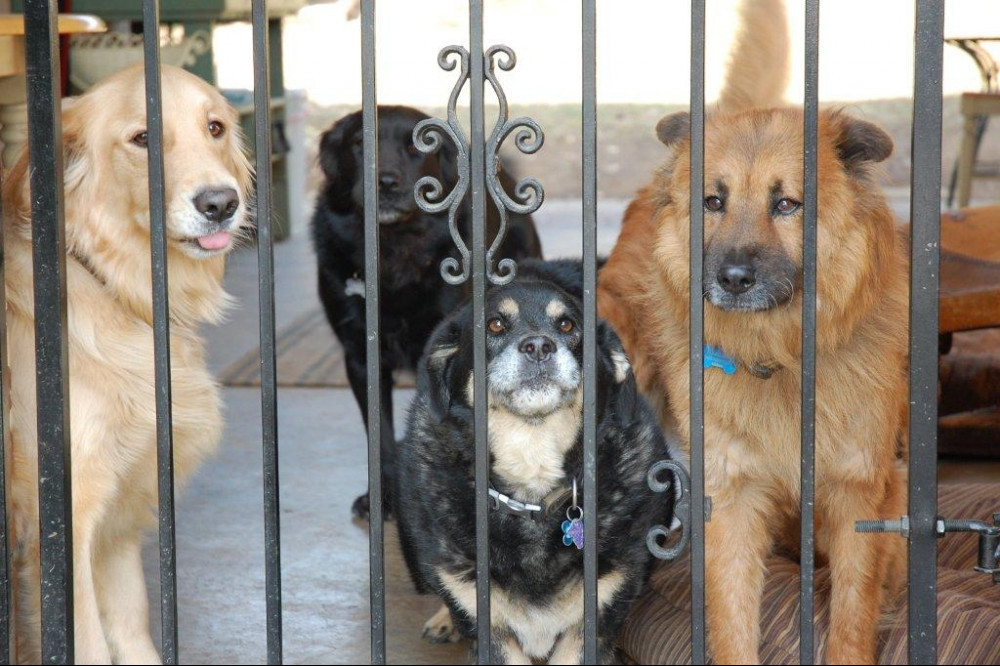
These are four of my dogs, Ben, Sophie, Charlie and Archie. I was very fortunate in successfully socializing them as puppies. By correctly introducing and familiarizing them to other dogs, people, places and experiences at an early age, they grew into well-adjusted and happy dogs. Their happiness and adaptability are due, in large part, to their successful socialization at a young age.
Socializing a new puppy is accomplished by correctly exposing your puppy to new experiences at home, meeting strangers, dogs and other pets, and familiarizing them to a variety of situations and environments. This socialization process should begin at a very young age. A responsible breeder will have begun socialization from birth. At this time, the litter is being handled and exposed to surrounding sights, sounds and activities.
This is just the beginning of your puppy’s critical socialization phase which lasts until 4 to 5 months of age. During this phase, they are acquiring and developing skills quickly. This is the critical time for exposing them to a wide variety of different situations. With this exposure, they acquire the composure and disposition for successful encounters with new things throughout their lives. Without this early socialization, an isolated or socially deprived puppy lacks the skills to react positively when confronted with anything new as they mature. Behavioral problems such as aggression, shyness and fearfulness are more likely in cases of under-socialization.
Puppy Vaccination Status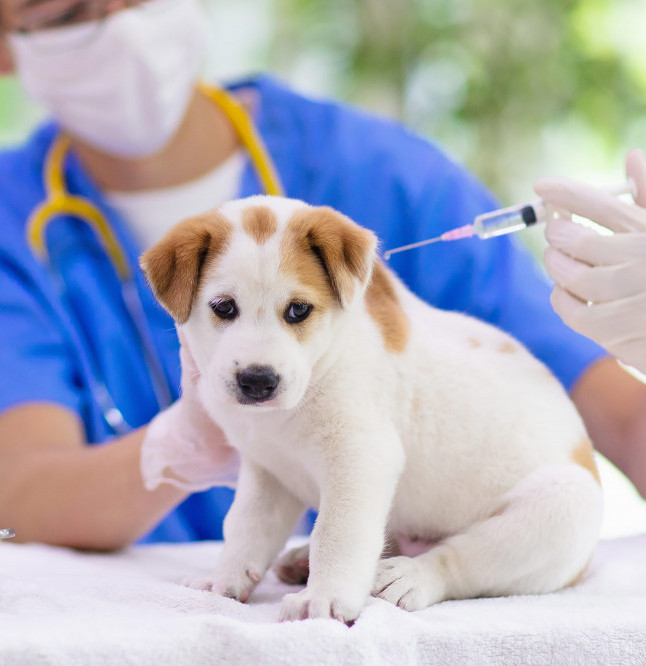
There are two rules of thought here. Some experts believe that puppies should receive their full set of vaccinations prior to contact with other dogs. In this case, a puppy would not be socialized with other dogs until about 3 to 4 months of age. That being said, a puppy would miss opportunities to socialize with other dogs for roughly 75% of the critical puppy socialization phase. This increases the chance of them being under-socialized. Here, they would be shy, fearful or less curious when they’re finally allowed to meet other dogs.
Others say socialization with other dogs is fine, even before a puppy is completely vaccinated, in situations where the other dogs are familiar and known to be vaccinated themselves. In this case, socialization can start as soon as you get your puppy, not having to wait until they are 3 to 4 months old when they become fully vaccinated. However, until your puppy is fully vaccinated, always keep in mind that they are vulnerable to contagious illnesses such as parvovirus and distemper. Avoid any situation which exposes your puppy to unfamiliar dogs and their feces.
When exposing your puppy to familiar dogs who are fully vaccinated, a risk is introduced should these dogs have been in previous contact with an unvaccinated dog or to contaminated dog feces. This could easily occur at dog parks or at other off leash activities. In this case, your puppy whose disease immunity is still developing, is at risk.
Household Environment
Your puppy’s new home is full of new spaces, inhabitants, sights, sounds, smells and textures to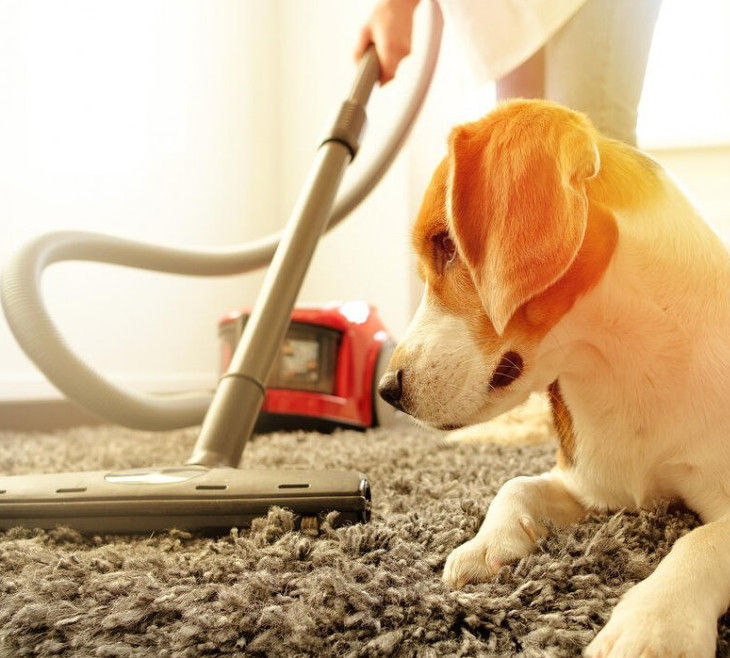 discover and explore. The sheer number of new stimuli for your puppy can be overwhelming. Be prepared to reassure your puppy should something new intimidate or confuse them. Providing a calm and comforting presence will encourage your puppy’s development of self-confidence and curiosity.
discover and explore. The sheer number of new stimuli for your puppy can be overwhelming. Be prepared to reassure your puppy should something new intimidate or confuse them. Providing a calm and comforting presence will encourage your puppy’s development of self-confidence and curiosity.
Introduce and familiarize your puppy to many different household sounds. These include kitchen sounds, telephone ringing, television and stereo equipment, vacuum cleaner, lawn mower, neighbors, etc.
Introduce your puppy to everyone living in the household, including other pets. With family members, make certain they each maintain a calm and friendly demeanor when meeting your puppy. With other family pets, avoid an overexcited or tense encounter. This could frighten your puppy and lead to withdrawal or shyness.
Another socialization skill to master is having your puppy feel comfortable while others approach their food bowl while they are eating. If your puppy shows signs of guarding or protecting their bowl, correct this behavior. Approach your puppy while they’re eating, drop a treat into their dish and walk away. Repeat this once or twice during each meal until your puppy associates your approach happily in anticipation of receiving a treat.
Get your puppy accustomed to spending intermittent time alone. Have a location, perhaps a crate or penned area, outfitted with toys, a blanket, a bone or chewy treat and other favorite items. This is where your puppy can learn to be comfortable during solitary time. This will reduce your puppy’s expectation of having your constant companionship. By doing so, your puppy will be less likely to develop separation anxiety when left alone.
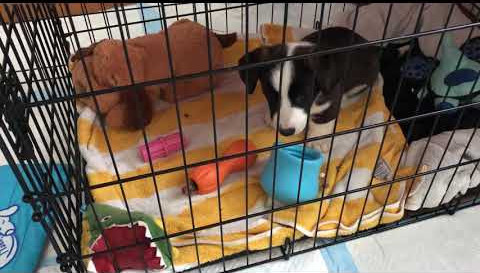
New People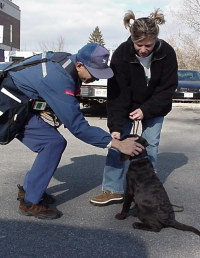
Expose your puppy to a variety of people early on. People of different ages, sizes, gender, engaged in various activities, wearing different types of apparel, using a wheelchair/crutch, speaking loudly or handling loud equipment such as a leaf blower, etc. The more variety, the better. Encourage calm, friendly interaction between your puppy and people of all types. Your puppy should be lovingly handled and spoken to during these encounters. Consequently, your puppy will develop a positive association with meeting an assortment of strangers.
Other suggestions of exposure to different kinds of people are runners, bikers and skaters, people dressed unusually such as wearing a big hat, people of varied nationalities, children playing, street musicians and vendors, sport participants, etc. Positive engagement with an assortment of people involved in different activities promotes development of a friendly and self-assured puppy.
Other Dogs and Pets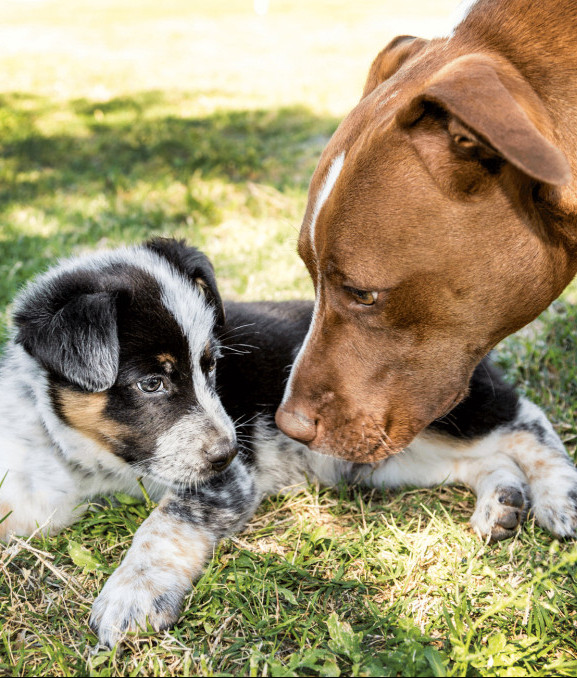
If you are adding your new puppy to a household having another dog(s), make certain that these dogs are current on their vaccinations and have not been in contact with potentially unvaccinated dogs. Next, consider the temperament of your existing dog(s). If there is any possibility of inappropriate behavior with a puppy, their first few encounters must be in a controlled situation where the puppy is protected by baby gates or puppy pens. Here, you can supervise the initial encounters and observe their interaction.
If they seem to be reacting with a friendly disposition and curiosity, then it’s safe to remove the protective barrier while continuing to monitor them. However, if your dog is not reacting well to your puppy, keep them separated. Do not risk having a poor interaction which could frighten or confuse your puppy. This could have a lifelong negative impact. In this situation, rely on the recommendations of a professional trainer during the introduction. 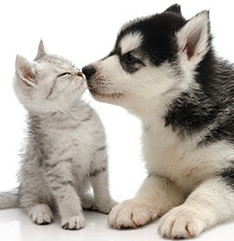
Similarly, introduction of your puppy to other household pets, such as a cat, must be controlled and closely monitored. Keep them separated until you are confident that they are well-behaved and well-mannered toward each other.
It’s amazing how well and quickly a puppy can adapt to living with not just other dogs, but to other pets as well. Case in point, I introduced several of my puppies to Petey, my long time pet Lovebird, who had full flying privilege in our house. They all got along well and there was not a single incident where my dogs behaved recklessly or unkindly towards Petey. In fact, it was Petey, The Mother Superior, who hilariously tended to boss the dogs around. Funnier still is how the dogs obediently minded her!
There are many ways to introduce your fully vaccinated puppy to dogs outside your household. There are dog parks, play groups, play dates with friends’ dogs and public leash walks. In these situations, be vigilant and closely monitor the behavior of any unfamiliar dogs you encounter. If you sense any sign of bullying or aggression, steer clear.
New Situations and Experiences
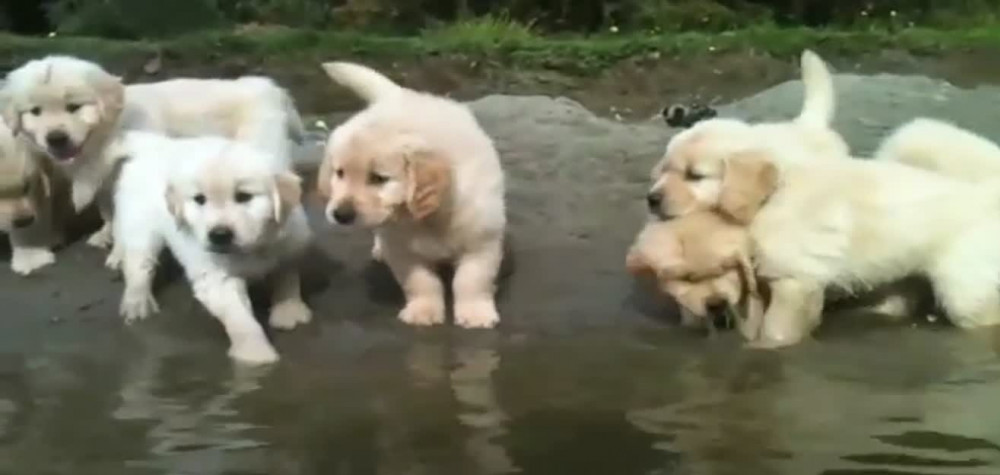
In addition to introducing your puppy to new people and new dogs, 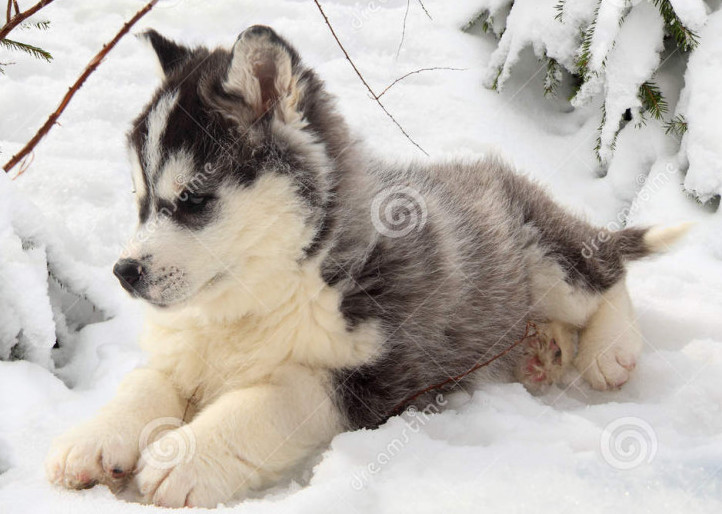 socialization also includes exposing them to a variety of environments and activities.
socialization also includes exposing them to a variety of environments and activities.
By doing so, your puppy will gain increased confidence in these new situations. This will also provide your puppy with a variety of experiences to keep them curious and adaptable.
Take different routes on your walks to expose your puppy to different environments. Include as much variety as you can to keep your dog engaged and stimulated. In addition to neighborhood walks, also include walks in parks, hiking through a forest, mountain or water setting, visiting a park or playground setting, etc.
In addition to walking, enjoy different types of physical activities with your puppy. This can include wading, swimming, hiking, playing in snow, fetching, etc. This provides variation and challenges for them.
Conclusion
Successful socialization of your puppy is crucial in raising a happy and well-adjusted dog. By socializing your puppy, you prepare them to appropriately interact with people and other animals in a variety of situations. Not only will they acquire the skills for engagement with a friendly and cheerful disposition, they are happy and confident in a variety of situations and settings.
Proper socialization of a puppy is vital to raising a happy and healthy dog.
